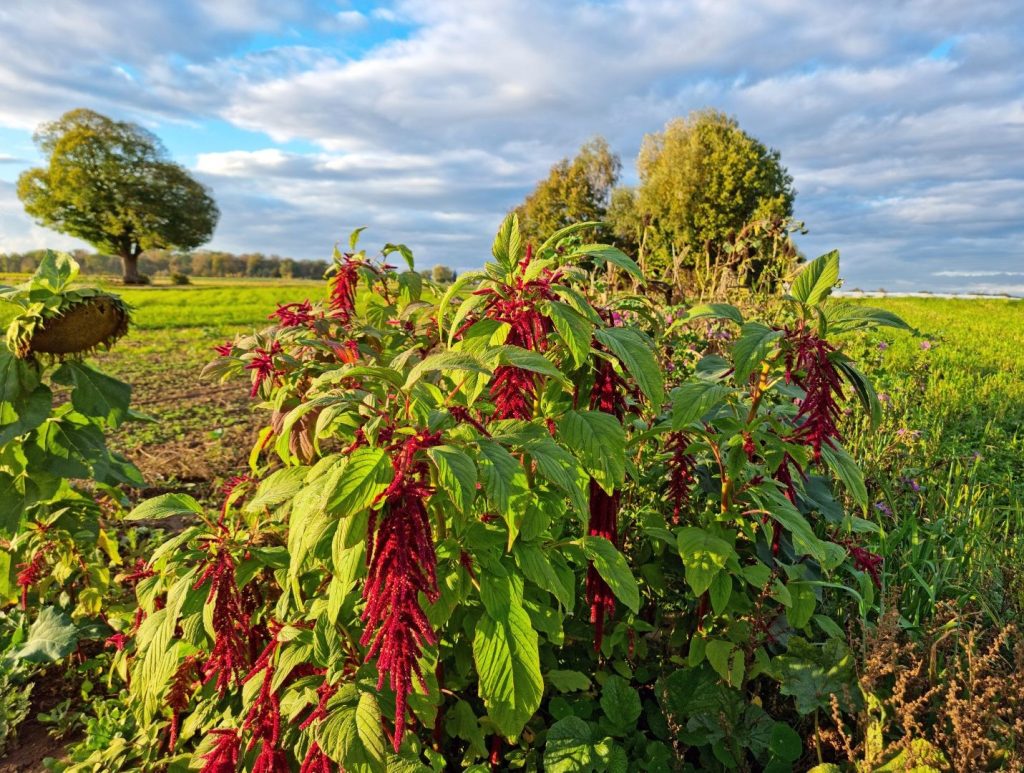Amaranthus: Health Benefits and Cultivation Tips
How to grow amaranth (amaranto)
Amaranthus spp., commonly known as amaranths, encompasses over 50 species used for various purposes worldwide. From leafy vegetables to ornamental plants, these hardy species thrive in diverse climate zones globally. Amaranth is classified as a pseudocereal. In tropical regions, amaranths flourish in the heat and heavy rainfall, showcasing their resilience against heat and drought. In subtropical areas, they adapt to varying temperatures and precipitation levels while also surviving in temperate zones, albeit at a slower pace. Despite their ability to thrive in arid conditions, temperature and rainfall significantly impact amaranths’ growth. Noteworthy for their adaptability, these annual plants boast a high protein content and excel at sequestering carbon dioxide during photosynthesis.
While these plants can survive in arid environments, they achieve optimal growth in non-arid soils. Amaranth can tolerate various soil conditions, including saline and sodic soils, but their growth may be affected. Amaranths’ versatility and nutritional value make them a fascinating subject in agriculture and sustainability.

Health Benefits of Amaranthus
Below is a closer examination of their advantages
- Micronutrients: Crucial for organ functionality and cellular metabolism.
- High Protein Content: Essential for tissue repair and structural integrity.
- Fiber-Rich: Promotes digestive health and prevents constipation.
- Antioxidant Properties: Protect cells against free radical damage.
- Cardiovascular Health: Contributes to lowering cholesterol and reducing the risk of heart disease.
- Anti-inflammatory: Mitigates health complications associated with chronic inflammation.
- Gluten-Free: Suitable for individuals with gluten intolerance.
- Squalene: Possesses potential anti-cancer properties.
Production methods for growing Amaranth (Amaranthus spp.)
How to grow and care Amaranth
Amaranth (Amaranthus spp.) prefers average, well-drained soil for optimal growth. It prospers in moist yet well-drained conditions, and loamy soils abundant in organic matter are perfect for its growth. The optimal soil pH for amaranth cultivation lies between 5.5 and 7.5. Although it can grow in average soils, overly fertile soils may impede its ability to flower and produce seeds. Conversely, dense clay soils are generally not recommended for amaranth.
Land Preparation:
- Prepare the land to a fine tilth by thorough plowing and harrowing.
- During the dry season, create raised beds that are approximately 90 cm wide and 20 cm high. Adjust the bed height to 30 cm or higher during the rainy season.
Planting Methods:
Direct Seeding (Broadcasting):
- Sow amaranth seeds directly into the soil (broadcasting).
- Mix the small amaranth seeds with sand (seed-to-sand ratio of 1:10 by volume) for even distribution.
- Lightly cover the seeds or use dry grass to aid germination.

Nursery Seedlings for Transplanting:
- Raise seedlings in a nursery on raised beds before transplanting to the field.
- Transplant seedlings when they have 4-7 true leaves (about 3-4 weeks after sowing in the nursery).
- Spacing varies based on variety and harvest method:
– Wide spacing for tall varieties with broad leaves and multiple harvests (plant density: 20-100 plants/m).
– Narrow spacing for short varieties with narrow leaves and single harvest (plant density: 100-400 plants/m).
Fertilization:
- Although amaranth can grow in poor soils, yields improve with fertilizer or manure.
- Organic fertilizers (20 t/ha) and complementary mineral fertilizers (250-400 kg/ha of NPK 20-10-10) are recommended.
- Conduct a soil test to determine nutrient levels.
Nutrient Deficiencies Symptoms :
When amaranth plants suffer from nutrient deficiencies, they exhibit specific symptoms. Here are some common signs to look out for:
Nitrogen Deficiency:
- Symptoms: Yellowing (chlorosis) of older leaves, stunted growth, and reduced leaf size.
- Cause: Insufficient nitrogen affects chlorophyll production and overall plant vigor.
- Solution: Apply nitrogen-rich fertilizer or add compost to improve soil fertility.
Iron Deficiency:
- Symptoms: Yellowing leaves with green veins (interveinal chlorosis), poor flower production, and stunted growth.
- Cause: Lack of iron affects chlorophyll formation and oxygen transport within the plant.
- Solution: Use iron chelate fertilizer or add organic matter to enhance soil iron availability.
Irrigation:
- Watering after sowing or transplanting is crucial for good stand establishment.
- During the rainy season, proper drainage is essential for plant survival and growth.
Overwatering:
- Symptoms: Yellowing leaves due to root rot caused by excessive moisture.
- Cause: Frequent watering leads to poor nutrient uptake.
- Solution: Allow soil to dry slightly between waterings and ensure proper drainage.
Weed Control:
- Use manual weeding or mulching to reduce weed competition.
- Mulching also conserves soil moisture and prevents soil compaction.
Disease and Pest Management:
- Symptoms: Yellowing leaves, stunted growth, and other damage.
- Cause: Aphids, spider mites, whiteflies, and fungal infections affect plant health.
- Solution:
- Control pests with insecticidal soap or neem oil; use fungicides for fungal diseases.
- Regular weeding reduces insect infestations and rodent attacks.
- Control diseases and pests to ensure a good yield.
Harvesting:
- Amaranth is ready for harvesting 35-45 days after planting or sowing, depending on the variety and harvest method.
- Harvest by pulling out or frequent clippings (multicut).
Production Challenges of Amaranth
Amaranth production faces several challenges, depending on the region and specific context. Some prevalent issues include:
- Diseases and Pests:
- Fungal infections such as anthracnose, powdery mildew, and damping-off can affect amaranth crops.
- Proper plant spacing and avoiding overhead watering can help prevent these diseases.
- Regularly inspecting crops for signs of pest infestations or disease development is crucial.
- Lack of Large-Scale Production:
In some regions, there are no large-scale amaranth productions, leading to a lack of data on its production.
Inadequate knowledge of its uses, agronomic requirements, low research efforts, and the absence of an organized market contribute to the underutilization of amaranth.
Varietal Limitations:
The poor cultivation and production of amaranth in certain areas can be attributed to factors such as:
- Lack of improved varieties.
- Soil depletion issues.
- Disease and pest challenges.
- Insufficient postharvest facilities.












































































